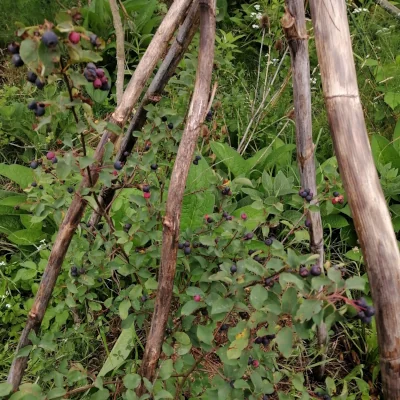Propagation
If there is sufficient seed it is best to sow it thinly in an outdoor seedbed[14][15]. Grow the seedlings on for two years in the seedbed before planting them out into their permanent positions during the winter. Layering in spring - takes 18 months[14].
Division of suckers in late winter. The suckers need to have been growing for 2 years before you dig them up, otherwise they will not have formed roots. They can be planted out straight into their permanent positions if required.
Cultivation
Prefers a rich loamy soil in a sunny position or semi-shade[16][6] but thrives in any soil that is not too dry or water-logged[2]. Plants are fairly lime tolerant[6], they also grow well in heavy clay soils.
Hardy to about -20°c according to one report[17], whilst another suggests that this species is hardy to about -50°c[2]. All members of this genus have edible fruits and, whilst this is dry and uninteresting in some species, in many others it is sweet and juicy. Many of the species have potential for use in the garden as edible ornamentals. This species is particularly interesting because it is quite compact and produces an excellent quality quite large fruit[K]. The main draw-back to this genus is that birds adore the fruit and will often completely strip a tree before it is fully ripe[K]. A very variable species, ranging from a thicket-forming shrub to a small tree in the wild[18]. It is occasionally cultivated for its edible fruit, there are several named varieties[8]. A stoloniferous species, spreading by suckers to form a thicket[2].
Hybridizes freely with other members of this genus[6]. Grafting onto seedlings of A. lamarckii or Sorbus aucuparia is sometimes practised in order to avoid the potential problem of hybridizing[16].
